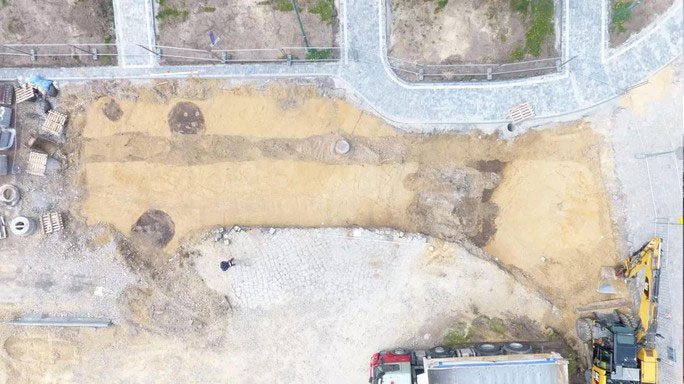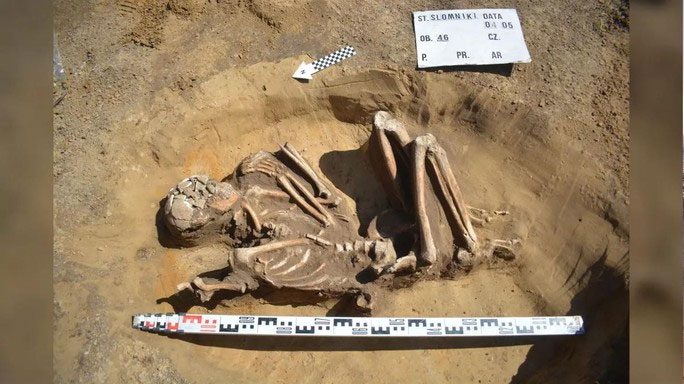Just a few years after resting, a mysterious skeleton has emerged in the town square of Słomniki in southern Poland, bringing with it surprising data and a wave of skepticism.
According to Live Science, the mysterious skeleton was discovered during the renovation of the town square, perfectly intact with every bone in place and in a resting position dating back to the Neolithic era.

Excavation site – (Photo: Pawel Micyk & Lukasz Szarek).
The skeleton was found alongside many fragments of pottery, which may be the remnants of grave goods. It was these pottery pieces that helped scientists quickly determine that the skeleton dates back approximately 7,000 years.
This is astonishing because human bones from that time would typically have deteriorated significantly, yet this individual remained remarkably preserved. It is entirely plausible to think that this person—whose gender remains unclear—had only been resting for a few years or, at most, a few decades.

Skeleton preserved to an almost unbelievable extent after 7,000 years – (Photo: Pawel Micyk & Lukasz Szarek).
Preliminary analysis from a team led by archaeologist Pawel Micyk from Galty Earth & Engineering Service, a local surveying agency responsible for the site, indicated that the unusual preservation of the skeleton is due to the loose, non-acidic soil in which the individual was buried.
“Currently, we cannot determine who the buried individual is, although an upcoming analysis by an anthropologist may reveal more information,” Micyk stated.
The research team also plans to establish a more precise dating of the skeleton using radiocarbon dating methods.
In addition to pottery, archaeologists also discovered flint fragments alongside the skeleton. The grave goods were damaged due to the upper part of the burial site being flattened by previous construction, which no one knew concealed a body beneath.
Despite the mysteries surrounding it, the grave is gradually revealing—and will continue to unveil—a fascinating chapter of the Neolithic farmers in the area, who migrated across the Carpathian Mountains from the south into Poland during the 6th millennium BC, according to comments from Associate Professor Malgorzata Kot from the University of Warsaw (Poland) sent to Live Science.


















































